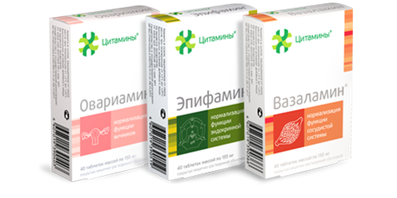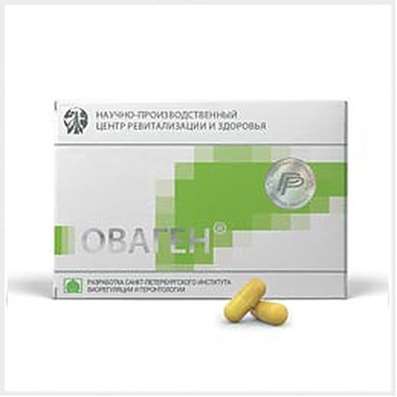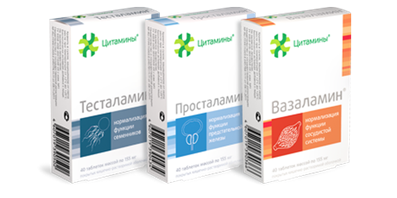Instruction for use: Plisil
I want this, give me price
Dosage form: coated tablets
Active substance: Paroxetine*
ATX
N06AB05 Paroxetin
Pharmacological groups:
Antidepressant
The nosological classification (ICD-10)
F32 Depressive episode: Adynamic subdepression; Astheno-adynamic subdepressive states; Asthenoadressive disorder; Astheno-depressive disorder; Asthenodepressive state; Astheno-depressive state; Major Depressive Disorder; Vyaloapatichesky depression with retardation; Double Depression; Depressive pseudodement; Depressive illness; Depressive mood disorder; Depressive disorder; Depressive mood disorder; Depressive state; Depressive disorders; Depressive syndrome; Depressive syndrome larviated; Depressive syndrome in psychoses; Depressed masks; Depression; Depression Depletion; Depression with the phenomena of inhibition within the framework of cyclothymia; Depression is smiling; Involutional depression; Involutionary melancholy; Involutional depression; Manic-depressive disorder; Masked Depression; Melancholic Attack; Neurotic depression; Neurotic depression; Shallow Depression; Organic depression; Organic depressive syndrome; Simple depression; Simple melancholic syndrome; Psychogenic depression; Reactive depression; Reactive depression with moderate psychopathological symptoms; Reactive depressive states; Reactive depression; Recurrent depression; Seasonal depressive syndrome; Severostatic depression; Senile Depression; Symptomatic Depression; Somatogenic depression; Cyclotymic depression; Exogenous depression; Endogenous depression; Endogenous Depressive Conditions; Endogenous Depression; Endogenous depressive syndrome
F33 Recurrent depressive disorder: Major depressive disorder; Secondary depression; Double Depression; Depressive pseudodement; Depressive mood disorder; Depressive disorder; Depressive mood disorder; Depressive state; Depressive syndrome; Depressed masks; Depression; Depression is smiling; Involutional depression; Involutional depression; Masked Depression; Melancholic Attack; Reactive depression; Reactive depression with moderate psychopathological symptoms; Reactive depressive states; Exogenous depression; Endogenous depression; Endogenous Depressive Conditions; Endogenous Depression; Endogenous depressive syndrome
F40.1 Social phobia: Social isolation; Social detachment; Social phobia; Social Anxiety Disorder / Social Phobia; Sociophobia; Sociopathy
F41 Other anxiety disorders: Anxiety status; Anxiety; Chronic alarm; Sense of anxiety; Anxious-hypochondria; Stopping an alarm; Nonpsychotic anxiety disorders
F41.2 Mixed anxiety and depressive disorder: Depression with anxiety-depressive components; Mixed anxiety-depressive conditions; Anxiety Depression; Anxious and depressing mood; Anxiety-depressive state; Anxious-depressive conditions; Anxiety-depressive syndrome; Anxious-Neurotic Conditions
F42 Obsessive-compulsive disorder: Obsessive-compulsive syndrome; Obsessive compulsive states; Obsessive-compulsive syndrome; The Obsession Syndrome; The obsession neurosis; Obsessive-compulsive neurosis; Obsessions
F43.1 Post-traumatic stress disorder: Combat fatigue; Catastrophe Syndrome; The survivor's syndrome; Traumatic isolation; Traumatic neurosis; Traumatic syndrome; Post-Traumatic Stress Disorder
Composition
Tablets covered with a film membrane 1 tab.
active substance:
paroxetine mesylate 25.83 mg
(equivalent to 20 mg of paroxetine)
auxiliary substances: calcium hydrophosphate anhydrous - 317.75 mg; sodium carboxymethyl starch - 5.95 mg; magnesium stearate - 7 mg
membrane film: lactose monohydrate - 3.81 mg; hypromellose - 2.97 mg; titanium dioxide (E171) 2.6 mg; Macrogol 4000 - 1.06 mg; iron oxide yellow (E172) - 0.16 mg; iron oxide red (E172) 0.002 mg
Description of dosage form
Round tablets covered with a film shell, from yellow to orange, with engraving "ROT 20" on one side and risk on both sides.
Pharmachologic effect
Mode of action - antidepressant.
Pharmacodynamics
Paroxetine is a selective inhibitor of re-uptake of 5-hydroxytryptamine (5-HT, serotonin) by neurons of the brain, which determines its antidepressant effect and effectiveness in treating obsessive-compulsive and panic disorders.
The main metabolites of paroxetine are polar and conjugated products of oxidation and methylation, which are rapidly excreted from the body, have weak pharmacological activity and do not affect its therapeutic effect. In the metabolism of paroxetine, the selective uptake of 5-HT neurons due to its action is not impaired.
Paroxetine has low affinity for muscarinic cholinergic receptors.
With selective action, unlike tricyclic antidepressants, paroxetine showed low affinity for α1-, α2-, β-adrenoreceptors, as well as dopamine, 5-HT1 and 5-HT2-serotonin and H1-histamine receptors.
Paroxetine does not impair psychomotor functions and does not potentiate the inhibitory effect of ethanol on them.
According to the behavioral and EEG studies, paroxetine reveals weak activating properties when it is administered at doses higher than those required to inhibit 5-HT capture. In healthy volunteers, it does not cause a significant change in blood pressure, heart rate and EEG.
Unlike antidepressants that inhibit norepinephrine reuptake, paroxetine suppresses the antihypertensive effects of guanethidine much less.
Pharmacokinetics
Paroxetine is well absorbed after ingestion and is metabolized first pass through the liver. Isolation of unchanged paroxetine in the urine is usually less than 2% of the dose, metabolites account for about 64% of the dose. The intestine excretes about 36% of the dose, probably through bile, in which unchanged paroxetine is less than 1% of the dose. Thus, paroxetine is excreted mainly in the form of metabolites.
Excretion of metabolites of paroxetine from the body is biphasic, first - as a result of the metabolism of the first passage through the liver, and then it is controlled by systemic elimination. T1 / 2 varies, but usually is about 16-21 hours. Css is reached by 7-14 days after the start of treatment, and pharmacokinetics during prolonged treatment does not change. The clinical effects of paroxetine (side effect and efficacy) do not correlate with its concentration in the plasma.
Since the metabolism of paroxetine involves the stage of the first passage through the liver, its quantity, determined in the systemic circulation, is less than that absorbed from the gastrointestinal tract. With an increase in the dose of paroxetine or with multiple dosing, when the load on the body increases, a partial absorption of the effect of the first passage through the liver and a decrease in the plasma clearance of paroxetine occur. As a result, an increase in the plasma paroxetine concentration and a fluctuation in the pharmacokinetic parameters are possible, which can be observed only in those patients who, when taking low doses, reach low plasma levels of the drug.
Paroxetine is extensively distributed in tissues, and pharmacokinetic calculations show that only 1% of it is present in the plasma, and at therapeutic concentrations 95% is associated with plasma proteins.
Indications for the Plisil
depression of all types, including reactive, severe endogenous depression and depression, accompanied by anxiety;
obsessive-compulsive disorder (OCD);
panic disorder, incl. with agoraphobia;
social anxiety disorder / social phobia;
generalized anxiety disorder;
post-traumatic stress disorder.
Contraindications
hypersensitivity to the components of the drug;
simultaneous administration with MAO inhibitors and within 14 days after their cancellation;
pregnancy;
lactation period;
children and adolescents under the age of 18 (efficacy and safety not established).
With caution: liver failure, renal insufficiency, zakratougolnaya glaucoma, prostatic hyperplasia, mania, heart pathology, epilepsy (with unstable epilepsy should avoid taking the drug), convulsions, the appointment of electropulse therapy, taking drugs that increase the risk of bleeding, the presence of risk factors increased bleeding, diseases that increase the risk of bleeding, elderly.
Side effects
From the nervous system: drowsiness, tremor, asthenia, insomnia, dizziness, fatigue, seizures, extrapyramidal disorders, hallucinations, mania, confusion, agitation, anxiety, depersonalization, panic attacks, nervousness, paresthesia, decreased ability to concentrate, serotonin syndrome .
From the musculoskeletal system: arthralgia, myalgia, myopathy, myasthenia gravis.
From the senses: visual impairment, taste change.
From the genitourinary system: violation of sexual function, including impotence and ejaculation, decreased libido, anorgasmia, urinary retention, increased urination.
On the part of the digestive system: decreased appetite, nausea, vomiting, dry mouth, constipation or diarrhea, in very rare cases - hepatitis.
From the CVS: orthostatic hypotension.
Other: increased sweating, allergic reactions (rash, urticaria, ecchymosis, pruritus, angioedema), hyponatremia, violation of ADH secretion, hyperprolactinaemia / galactorrhea, withdrawal syndrome with abrupt withdrawal of the drug.
Interaction
The intake of food and antacid agents does not affect the absorption and pharmacokinetic parameters of the drug.
Paroxetine is incompatible with MAO inhibitors, thioridazine.
With simultaneous administration with paroxetine, the concentration of procyclidine increases.
During therapy with paroxetine, one should refrain from taking alcohol because of the possible increase in the toxic effect of alcohol.
Metabolism and pharmacokinetics of paroxetine may change with the co-administration with drugs inducers / inhibitors of liver enzymes.
In connection with paroxetine inhibition of cytochrome P450, the effect of barbiturates, phenytoin, indirect anticoagulants, tricyclic antidepressants (nortriptyline, amitriptyline, imipramine, desipramine and fluoxetine), phenothiazine neuroleptics (thioridazine) and antiarrhythmics of class 1C (including propafenone), metoprolol and an increased risk of side effects with the simultaneous administration of these drugs.
At simultaneous appointment with the preparations, inhibiting enzymes of a liver, the dose of paroxetine can be required.
Paroxetine increases bleeding time against the background of taking warfarin, with unchanged PV.
With the simultaneous administration of paroxetine with atypical antipsychotic agents, phenothiazines, tricyclic antidepressants, aspirin, NSAIDs, caution should be exercised in connection with possible bleeding disorders.
Simultaneous administration with serotonergic drugs (tramadol, sumatriptan) may lead to an increase in the serotonergic effect.
As with the appointment of other SSRIs, there was a mutual increase in the effect of tryptophan, lithium and paroxetine. Joint reception with lithium preparations is carried out under the control of their concentration in the blood.
It is not recommended to co-prescribe with preparations containing tryptophan. When using paroxetine, as well as other SSRIs, neuroleptics may develop malignant neuroleptic syndrome.
With the simultaneous administration of paroxetine with phenytoin and other anticonvulsants, a decrease in paroxetine concentration in the plasma and an increase in the incidence of side effects are possible.
Dosing and Administration
Inside, 1 time per day, in the morning, while eating. The tablet is swallowed whole, washed down with water. The dose is selected individually during the first 2-3 weeks after the initiation of therapy and is subsequently adjusted if necessary.
With depression: 20 mg once a day. If necessary, the dose is gradually increased by 10 mg / day, maximum - up to 50 mg / day (depending on the patient's reaction).
In OCD: the initial therapeutic dose is 20 mg / day, followed by a weekly increase of 10 mg. The recommended average therapeutic dose is 40 mg / day, if necessary, the dose may be increased to 60 mg / day.
For panic disorders: the initial dose is 10 mg / day (to reduce the possible risk of developing panic symptoms) followed by a weekly increase of 10 mg. The average therapeutic dose is 40 mg / day. The maximum dose is 50 mg / day.
Socially-anxiety disorders / social phobia: the initial dose is 20 mg / day, in the absence of effect for at least 2 weeks, an increase in the dose to a maximum of 50 mg / day is possible. The dose should be increased by 10 mg at intervals of at least a week in accordance with the clinical effect.
Post-traumatic disorders of the psyche: for the majority of patients, the initial and therapeutic doses are 20 mg / day. In some cases, an increase in the dose of paroxetine is recommended to a maximum of 50 mg / day. The dose should be increased by 10 mg every week in accordance with the clinical effect.
Generalized anxiety disorders: the initial and recommended dose is 20 mg / day.
With renal and / or liver failure: the recommended dose is 20 mg / day.
As with all other antidepressants, the dose of the drug should be assessed and, if necessary, adjusted within 2-3 weeks at the beginning of therapy, and then - as necessary. Patients should continue treatment for a period sufficient for the disappearance of symptoms: at least 4-6 months after recovery with depression and more - with OCD and panic disorder. As for many other psychotropic drugs, it is not recommended that the drug be abruptly discontinued.
For elderly patients: the daily dose should not exceed 40 mg.
In order to prevent the development of withdrawal syndrome, the discontinuation of taking the drug is carried out gradually.
The use of paroxetine in children is not recommended, since its safety and efficacy in this population are not established.
Overdose
Symptoms: nausea, vomiting, tremor, dry mouth, dilated pupils, fever, changes in blood pressure, headache, involuntary muscle contractions, agitation, anxiety, sinus tachycardia, sweating, drowsiness, nystagmus, bradycardia, nodal rhythm.
In very rare cases, while taking with other psychotropic drugs and / or alcohol, ECG changes are possible, coma.
Treatment: gastric lavage, the appointment of activated charcoal. If necessary, symptomatic therapy. There is no specific antidote.
Special instructions
To avoid the development of malignant neuroleptic syndrome with caution appoint patients receiving neuroleptics.
Paroxetine does not impair cognitive and psychomotor functions, however, as with other psychotropic medications, patients should be careful when driving and moving machinery.
During the treatment period, one should refrain from drinking alcohol and practicing potentially dangerous activities that require an increased concentration of attention and speed of psychomotor reactions.
Treatment with paroxetine is prescribed 2 weeks after the abolition of MAO inhibitors.
In elderly patients, hyponatremia is possible.
In some cases, a dose adjustment of insulin and / or oral hypoglycemic agents is required.
With the development of seizures, paroxetine treatment is discontinued.
At the first sign of mania, therapy with paroxetine should be discontinued.
During the entire treatment period, the patient's condition should be carefully monitored in connection with possible suicidal attempts. A high-risk group, especially in the first weeks of treatment, as well as in the first weeks after discontinuation of the drug, is composed of patients under the age of 25 years.
Release form
Tablets, film-coated, 20 mg. For 10 tab. in a blister of PVC / PE / PVDC / aluminum foil; 3 blisters in a cardboard box.
Conditions of leave from pharmacies
On prescription.
Storage conditions for Plisil
At a temperature not exceeding 30 ° C.
Keep out of the reach of children.
Shelf life of Plisil
3 years.
Do not use after the expiry date printed on the package.

 Cart
Cart





